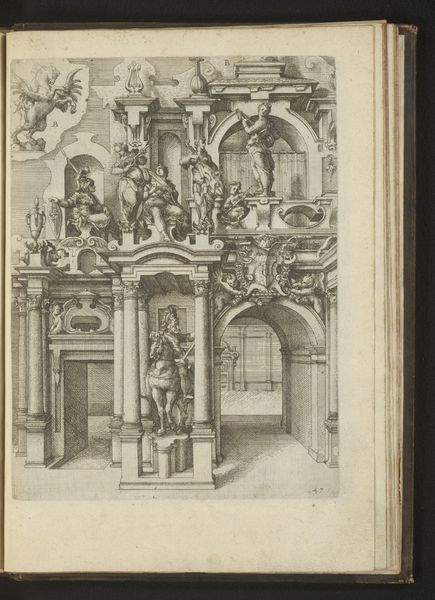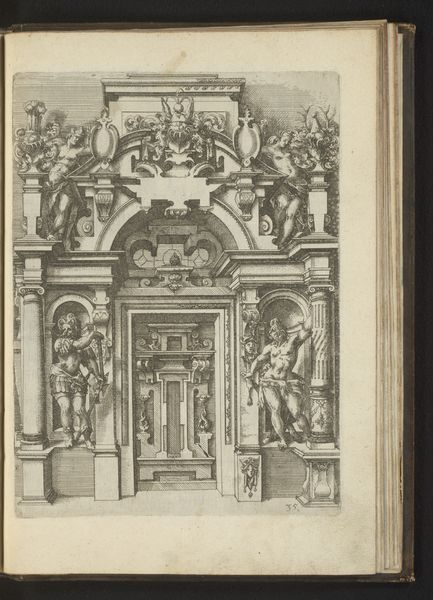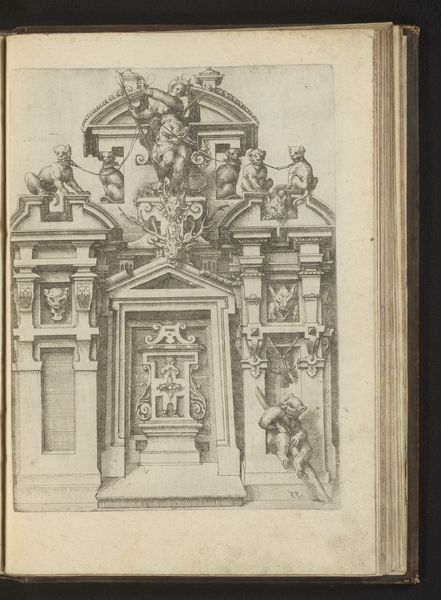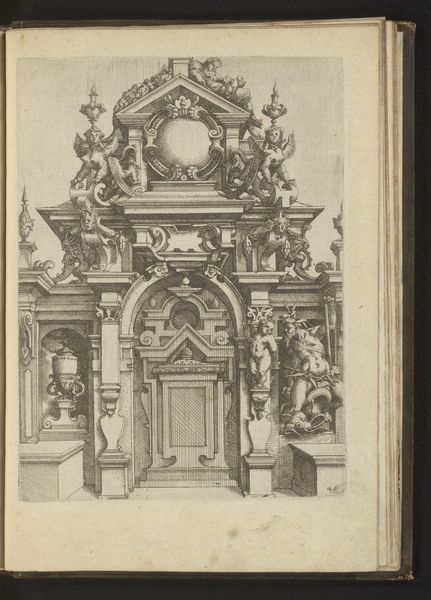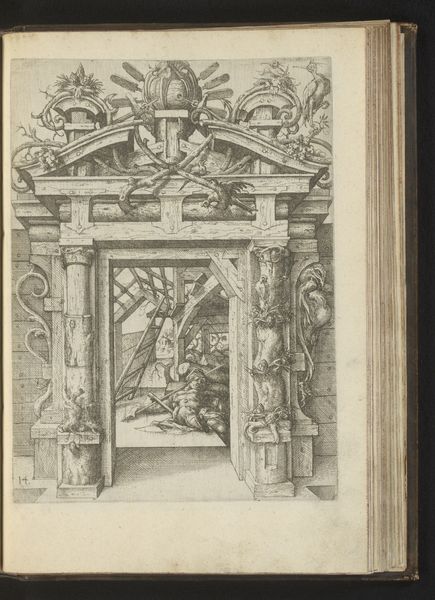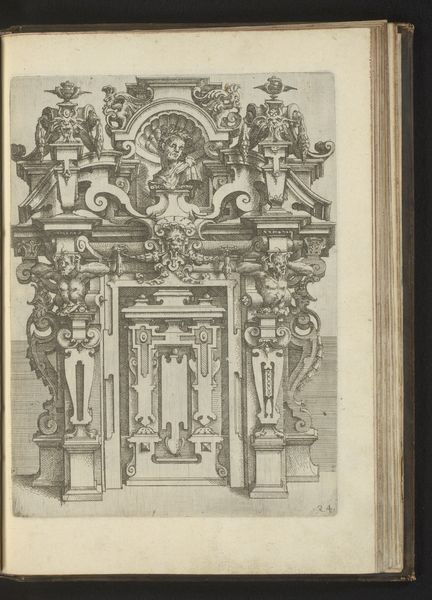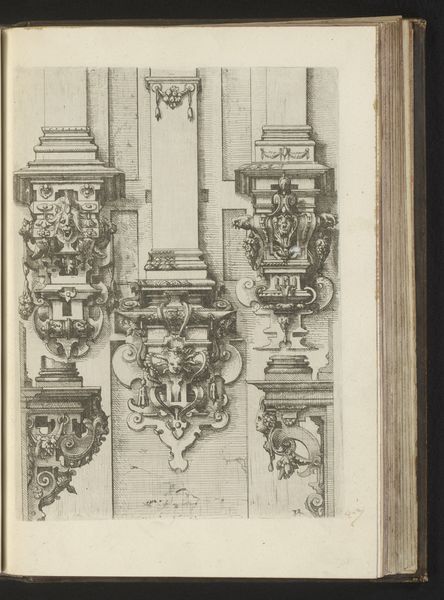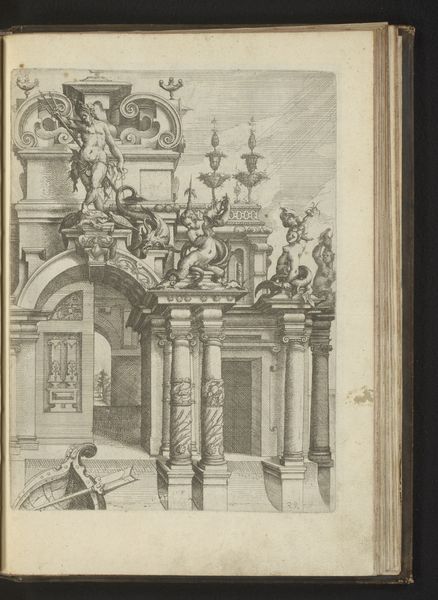
Portaal gedecoreerd met putti en geflankeerd door twee soldaten 1593 - 1595
0:00
0:00
drawing, ink, engraving, architecture
#
pen and ink
#
drawing
#
landscape
#
mannerism
#
figuration
#
form
#
11_renaissance
#
ink
#
geometric
#
engraving
#
architecture
Dimensions: height 247 mm, width 186 mm
Copyright: Rijks Museum: Open Domain
This engraving of a portal decorated with putti and flanked by soldiers was created by Wendel Dietterlin around 1593. A symbol of power, the portal is adorned with putti, winged cherubic figures of great antiquity, which create a symbolic bridge between the earthly and divine realms. The putto's evolution is fascinating. Emerging from ancient Greek and Roman art as representations of Eros or Cupid, they signified love and desire. During the Renaissance, they were assimilated into Christian art, becoming symbols of divine love and spiritual innocence. Consider Botticelli's "Birth of Venus," where putti surround the goddess, or Raphael's cherubs in the "Sistine Madonna," where they embody divine presence. Here, Dietterlin integrates them into an architectural context, a testament to their adaptive power. Their presence evokes a sense of higher aspiration, appealing to a collective memory of transcendence. The image becomes emotionally charged, stirring a profound, perhaps subconscious, longing for a connection to the divine. These motifs cycle through time, continually reinventing themselves in response to our ever-changing cultural and spiritual needs.
Comments
No comments
Be the first to comment and join the conversation on the ultimate creative platform.
